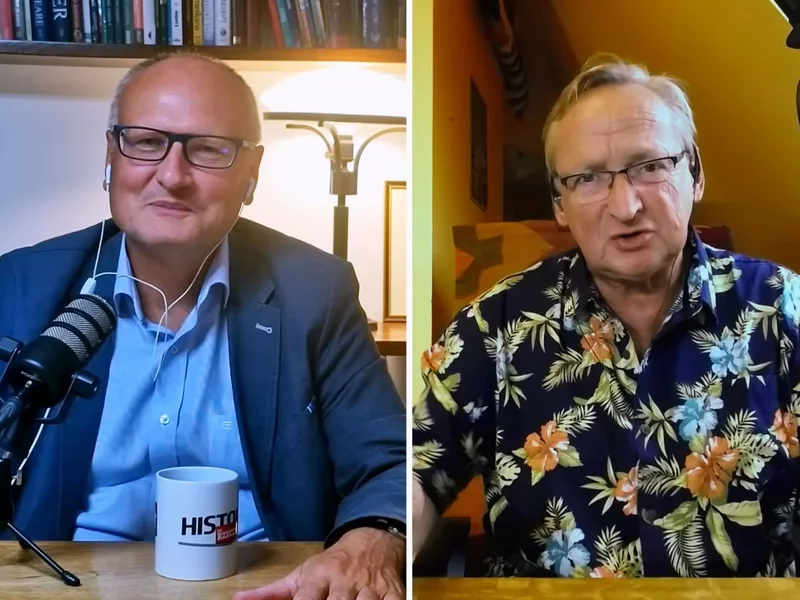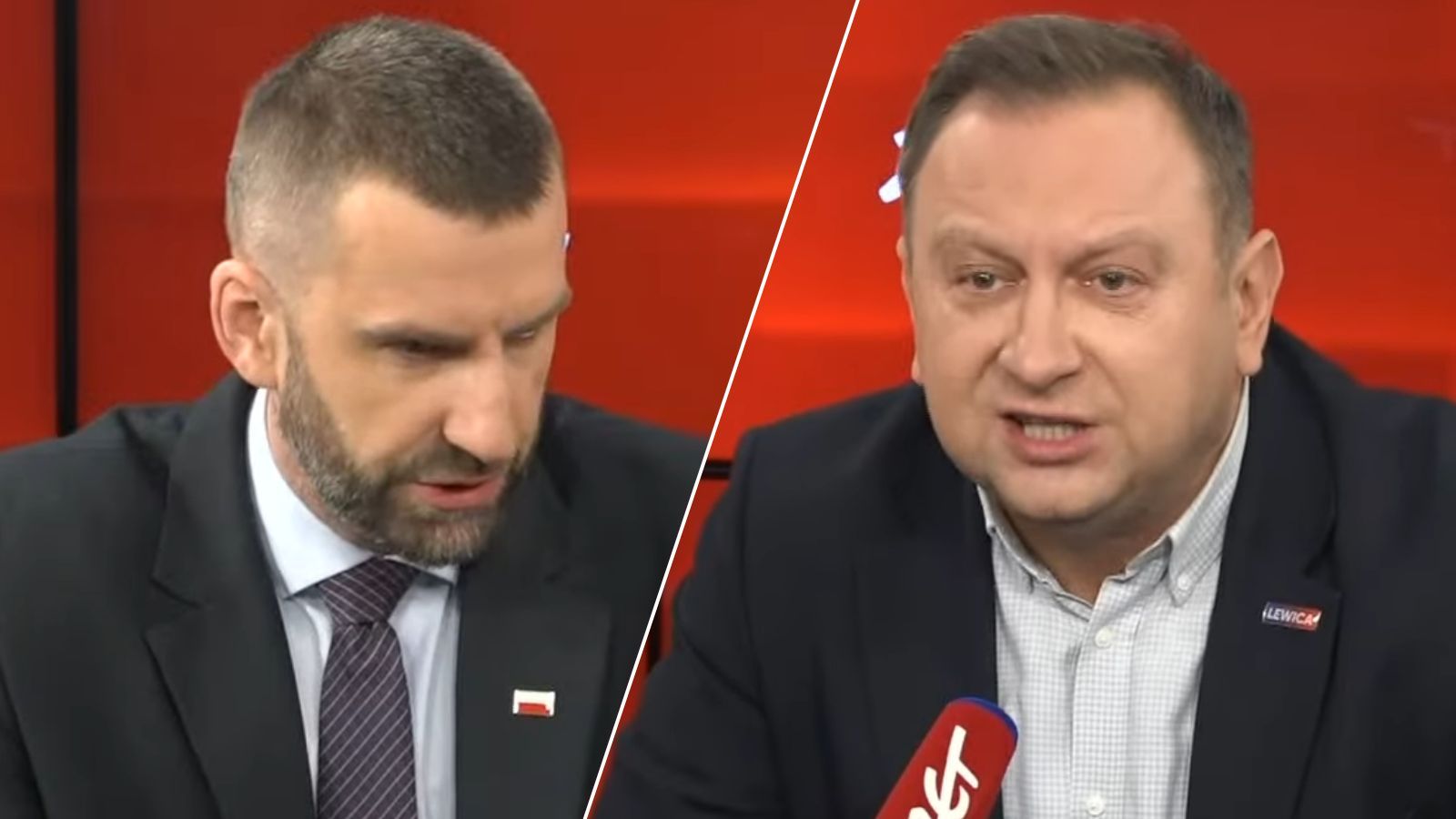
Futures Rebound, Oil Slides As Dip Buyers Fade US Bombing Of Iran
US stock futures rebounded strongly overnight after initially falling as much as 1% to 5,970 after the weekend escalation in the Iran-Israeli war where the US bombed three key nuclear facilities in Iran, to eventually rise as much as 0.3% before fading again as US traders came to their desks, while Europe traded near session lows. As of 8:00am ET, S&P futures are down 0.1% while Nasdaq 100 futures drop 0.3% with Mag 7 names mixed, as TSLA outperforms (+1.5% after the Robotaxi launch), META (+0.4%) and GOOG/L (+0.4%). Bond yields reversed an earlier rise, only to slump sharply just before 8am ET, the US dollar surges as the world remembers just what the flight to safety currency is (the basket case of a currency that is the Japanese yen tumbled to 148, the lowest in almost two months). Commodities are largely flat; Brent crude pared an advance of as much as 5.7% to about 1.2%, trading below $78 a barrel as the market took Iran’s lack of immediate retaliation as signs of capitulation. US economic data slate includes June manufacturing and services PMI (9:45am) and May existing home sales (10am). Powell testifies in the House of Representatives Tuesday, Senate Wednesday

In premarket trading, Mag7 stocks are mixed (Tesla +0.5%, Meta -0.2%, Alphabet -0.2%, Amazon -0.3%, Microsoft -0.3%, Apple -0.3%, Nvidia -0.9%). US energy and defense stocks are higher in premarket trading with markets awaiting Iran’s reaction to US strikes on its nuclear facilities and if it is going to disrupt oil supplies. Shares of airlines and cruise operators edged lower. Here are some other notable premarket movers:
- AST SpaceMobile Inc. (ASTS) shares fell 3% in premarket trading after Scotiabank cut its recommendation on the space broadband company to sector perform from sector outperform.
- Advanced Micro Devices Inc. shares (AMD) are up 0.4% in premarket trading, after Melius Research upgraded the chipmaker to buy from hold.
- Circle Internet Group (CRCL) is set to extend gains for a third consecutive session, rising 6.3% in premarket trading, after the US Senate passed stablecoin legislation last week.
- Dow Inc. shares (DOW) are down 1.8% in premarket trading, after BMO Capital Markets downgraded the chemical company to underperform from market perform.
- Estee Lauder (EL) rises 1.8% in US premarket trading after Deutsche Bank upgrades the cosmetics company to buy from hold due to increasing evidence that the firm is diversifying beyond China for future growth.
- Fiserv shares (FI) jump 3.9% in premarket trading Monday after the Wall Street Journal reported the financial-technology company’s plans to launch a stablecoin and platform for its clients.
- Hims & Hers Health (HIMS) shares crater 18% after Novo Nordisk ended its partnership with the telehealth platform that has been selling compounded obesity drugs
- Li Auto ADRs (LI) gain 4.6% in US premarket trading after the Chinese electric-vehicle maker said it will introduce a new electric SUV in September.
- Northern Trust Corp. shares (NTRS) gain 4.6% in premarket trading on Monday after the Wall Street Journal reported that Bank of New York Mellon had approached the company in recent days to express interest in a possible merger.
- Tesla (TSLA) is outperforming fellow Magnificent 7 stocks in premarket trading on Monday, rising 0.5%, after launching its much-anticipated driverless taxi service to a handful of riders on Sunday.
US equity futures staged a powerful rebound from overnight lows but remained on edge even as brent crude pared an advance of as much as 5.7% to about 1.2%, trading below $78 a barrel. The dollar strengthened 0.5% against a basket of currencies, advancing against all Group-of-10 peers as traders hedged against the risk of further oil price gains.
Oil, which has risen more than 12% since the onset of the Israel-Iran conflict, remained the central focus as any interruption to traffic through the Strait of Hormuz raises the specter of a spike in energy prices and higher inflation. While Iran’s Foreign Minister Abbas Araghchi said the country reserved all options for a response, there haven’t yet been any signs of disruption to physical flows.
“Markets are judging that the response may not be quite as dramatic, because Iran would risk antagonizing others who are not yet pulled in,” John Bilton, head of multi-asset strategy at JPMorgan Asset Management, told Bloomberg TV. The market is “absorbing a geopolitical event that is going on and judging that this does not, on face value, change the direction of travel.”
Sure enough, the market agrees and its reaction has been generally muted since Israel’s initial assault on Iran this month. Even after falling for the past two weeks, the S&P 500 is only about 3% below its all-time high from February. Additional losses may be contained, as some investors had already positioned for an escalation in the conflict. Equity exposure among fund managers has been trimmed while stocks are no longer in overbought territory.
The market’s sanguine reaction offers investors an opportunity to reduce their risk exposure, noted Mohit Kumar, chief European strategist at Jefferies International.
„We don’t see a closure of the Hormuz strait but see possibility of disruption,” Kumar said. “Our base case would be a period of uncertainty lasting a few weeks, but without a sharp escalation.”
Yet while the market reaction to the US strike on Iranian nuclear facilities is muted so far, a lot could happen from here. For traders, all eyes are on oil prices and whether shipping through the key Strait of Hormuz will be disrupted. If Iran was to close the Strait of Hormuz, “a stagflation scenario with lower growth and higher inflation due to elevated oil prices is the main risk for markets,” said Ulrich Urbahn, head of multi-asset strategy and research at Berenberg. “It would also curb the abilities of central banks to support markets.”
In Europe, the Stoxx 600 also tried to stage a recovery, and failed trading down almost 1% last at its worst levels. Tech, construction and energy are among the few rising sectors while industrial goods and services and chemicals are the worst performers. Here are some of the biggest movers on Monday:
- Energy stocks gain while airlines fall as unprecedented US airstrikes on Iran set traders and governments worldwide on edge. Some international airlines including British Airways canceled some flights to the Persian Gulf.
- UCB gains as much as 5.2% after Morgan Stanley upgraded the Belgian biotech to overweight, saying the year-to-date pullback offers a “uniquely compelling entry point” and seemingly obscures strong fundamentals.
- Saab shares drop as much as 4.3%, Hensoldt falls as much as 6.9% and Renk tumbles as much as 7.6% after Citi downgraded the three European defense stocks to sell, saying the NATO summit is probably as good as it will get for them in terms of spending.
- Air Liquide falls as much as 2.4%, the most since April 9, after BofA Global Research cut its recommendation on the French industrial gas firm to underperform.
- Novo Nordisk shares slip as much as 3.5% after researchers presented new data on the Danish drugmaker’s next-generation obesity shot CagriSema.
Earlier in the session, Asian equities fell to a three-week low, led by technology shares, as US strikes on three Iranian nuclear sites dented risk appetite. The MSCI Asia Pacific Index declined as much as 1.3% to the lowest since June 3, with TSMC, Sony and Samsung Electronics contributing the most to the drop. Share indexes in Taiwan, Philippines and Indonesia retreated more than 1% each. Stocks in Asia have recently lost momentum after a strong start to June, as investors scale back their risk exposure amid rising tensions in the Middle East. Market participants are closely watching for Iran’s response after it warned of retaliation while Israel showed no signs of easing its offensive. “Obviously concern levels are heightened but we are unlikely to get huge disruptions from the weekend’s events on financial markets barring new entrants into the conflict,” said Matthew Haupt, portfolio manager at Wilson Asset Management. “I think markets are awaiting further developments in the Middle East and very much on the sell track before this unresolved risk.”
In FX, the Bloomberg Dollar Spot Index extends its climb to 0.5%. The Japanese yen and kiwi dollar are the weakest of the G-10 currencies, falling 1.2% each. The Swiss franc has been the most resilient against the greenback with only a 0.1% decline.
In rates, treasuries are reversed their earlier drop, with US 10-year yields dropping 2 bps to 4.35%. Bunds are a touch lower, but underperforming their UK counterparts. Both showed little reaction to regional PMI data — euro-area composite PMI came in slightly below the median estimate while the UK reading was slightly ahead of the consensus. Ahead this week are 2-, 5- and 7-year note auctions beginning Tuesday and Fed Chair Powell’s semiannual congressional testimony, also Tuesday.
In commodities, WTI crude oil futures gapped 4.6% higher at the open in anticipation of Iran’s response, rising to $78 the highest since January, but have pared the gain to about 1%. Spot gold is little changed near $3,368/oz.
Looking at today’s calendar, US economic data slate includes June manufacturing and services PMI (9:45am) and May existing home sales (10am).Fed speakers include Governor Bowman (10am), Chicago’s Goolsbee (1:10pm), New York’s Williams and Governor Kugler (2:30pm). Powell testifies in the House of Representatives Tuesday, Senate Wednesday
Market Snapshot
- S&P 500 mini -0.1%,
- Nasdaq 100 mini -0.2%,
- Russell 2000 mini -0.2%
- Stoxx Europe 600 -0.8%,
- DAX -0.2%,
- CAC 40 -0.2%
- 10-year Treasury yield -3 basis points at 4.35%
- VIX +0.2 points at 20.82
- Bloomberg Dollar Index +0.5% at 1217.7
- euro -0.5% at $1.1461
- WTI crude +0.4% at $74.15/barrel
Top Overnight News
- When the dust settled on Iran’s nuclear sites on Sunday after a US bombing raid that President Donald Trump said had “totally obliterated” its atomic program, one thing was still missing: its highly enriched uranium, which international authorities haven’t seen for more than a week.
- Oil erased earlier gains as fears began to fade of an immediate disruption to supplies from the Middle East, following US strikes on key Iranian nuclear sites.
- The euro area’s private sector barely grew in June, remaining in limbo as erratic US trade policy and geopolitical conflicts leave companies in the dark on what’s next.
- Japan will reduce its issuance of super-long bonds starting in July, taking a step to calm a bond market rattled by recent surges in yields.
- The UK private sector expanded at a marginally faster pace in June, helping ease worries of an economic contraction in the second quarter, according to a closely watched survey.
- A UK agency set up to kick-start the country’s municipal bond scene has closed to new business, abandoning a decade-long push to emulate vibrant markets in the US and Europe.
Israel/Iran
- US President Trump confirmed the launch of “Operation Midnight Hammer”, which involved targeted strikes on Iran’s nuclear facilities at Fordow, Natanz, and Isfahan. The operation used 125 aircraft, including seven B-2 bombers, alongside submarine-launched Tomahawk cruise missiles. Fourteen GBU-57 Massive Ordnance Penetrators („bunker busters”) were deployed to penetrate deeply buried targets, notably Fordow.
- Satellite imagery shows significant damage at all facilities. Trump described it as a joint effort with Israel.
- IAEA say the damage assessment is pending; no signs of radiation leak.
- In retaliation, Iran’s parliament has approved the closure of the Strait of Hormuz after the US launched strikes against the country’s nuclear facilities. Iran’s security body will make the final decision on whether to proceed with the plan, state television reported.
- Iran retaliated by missile strikes on Israel. Has said future action could target over 20 US bases or naval assets. Iran’s Military Central Command says powerful operations with heavy consequences for the US are to be expected. US entering the conflict expands the list of legitimate targets for Iran.
- The European morning has seen a slew of geopolitical updates (see section below). Some additional USD strength on: an Iranian provincial official says Israel is targeting the Fordow nuclear facility, via Tasnim. Israel struck Fordow’s access road, to prevent certain elements from approaching the area, according to Journalist Stein.
Trade/Tariffs
- Japan scrapped a planned US meeting after Washington demanded higher defence spending, according to FT sources on Friday. US Secretary of State Rubio and Defence Secretary Hegseth had been scheduled to meet Japan’s Defence Minister Nakatani and Foreign Minister Iwaya in Washington on 1 July. Tokyo cancelled the meeting after the US requested Japan raise its defence spending target to 3.5%, up from an earlier request of 3%.
- US President Trump said on Friday that it looks like the US would make trade deals with India and Pakistan, according to Reuters.
- Japanese, South Korean, New Zealand, and Australian leaders will meet US President Trump at NATO, according to Nikkei.
- IMF Managing Director Georgieva said global growth was forecast to slow down but no recession yet; IMF forecasts to be released in July, according to Bloomberg TV.
- Japanese PM Ishiba is reportedly planning to skip NATO attendance, according to Kyodo.
- Fed’s Barkin (2027 voter) on Friday said he sees no rush to cut interest rates and is not ready to dismiss the inflation risk from tariffs. He stated that a spike in inflation could not be ignored if it occurred, noting that price indices remained above target. He added that there was nothing urgent in the data warranting a rate cut at this point, with the job market and consumption holding up.
- Fed’s Daly (2027 voter) on Friday said things were balanced and suggested looking more to the fall, rather than July, for a possible rate cut, in a CNBC interview. She stated that the economy and policy are currently in a good place, and concerns about tariffs on inflation were not as large as when they were first announced. Daly noted it was great news that inflation continued to decline. She said that without tariffs, the Fed would be considering rate normalisation, but they needed to continue monitoring policies going forward.
A more detailed look at global markets courtesy of Newsquawk
APAC stocks traded lower with sentiment hit after weekend developments which saw the US carry out missile strikes against Iranian nuclear facilities in a surprise move. ASX 200 declined 0.8% in tandem with broader sentiment, with participants overlooking the improvement in Flash PMIs. Nikkei 225 fell 0.5%, though losses were somewhat cushioned by a weaker JPY on account of the stronger USD, with regional Flash PMIs largely shrugged off. Hang Seng and Shanghai Comp conformed to broader regional losses, with the focus largely on geopolitics. Chinese sentiment was further hampered by Friday’s WSJ report that the US is reportedly preparing action targeting allies’ chip plants in China.
Top Asian News
- Chinese cross-border payment stocks rise after China and Hong Kong launched a fast cross-border payment connect on June 22.
- Asian energy shares gain after a US attack on Iran’s three main nuclear sites boosted oil prices.
- Asian airline shares decline after crude oil prices surged following the US airstrikes on Iran over the weekend that targeted three nuclear facilities.
- Some shipping stocks in South Korea and China advance on speculation that tanker freight rates may rise following US air strikes on Iranian nuclear sites over the weekend.
- Asian defense stocks advance after the US launched strikes on three Iranian nuclear sites over the weekend.
- Macau casino operator shares decline after Morgan Stanley cut the industry’s Ebitda expectations by 3% and 4% for 2025 and 2026.
- Asia’s chip stocks decline after the Wall Street Journal reported a US Commerce Department official has told top semiconductor companies he wants to revoke waivers they have used to access American technology in China.
- Shares in Asian gold miners follow gains in bullion as investors buy haven assets after the US joined Israel in its attack on Iran.
European bourses (STOXX 600 +0.1%) opened lower across the board, as traders react to the surprise US attack on Iran. Although, it is worth noting that stocks have traded with an upward bias throughout the morning, with a handful of indices managing to climb into the positive territory. European sectors hold a negative bias, with only a handful of industries managing to hold afloat. Construction & Materials tops the pile, joined closely by Tech and then Energy; the latter of course buoyed by the upside in oil prices, sparked by the latest geopolitical flare ups.
Top European News
- EU HCOB Composite Flash PMI (Jun) 50.2 vs. Exp. 50.5 (Prev. 50.2); Services Flash PMI (Jun) 50.0 vs. Exp. 50.0 (Prev. 49.7); Manufacturing Flash PMI (Jun) 49.4 vs. Exp. 49.7 (Prev. 49.4)
- French HCOB Services Flash PMI (Jun) 48.7 vs Exp. 49.2 (Prev. 48.9); Manufacturing Flash PMI (Jun) 47.8 vs Exp. 50.0 (Prev. 49.8); Composite Flash PMI (Jun) 48.5 vs Exp. 49.3 (Prev. 49.3)
- German HCOB Manufacturing Flash PMI (Jun) 49.0 vs. Exp. 48.7 (Prev. 48.3); Services Flash PMI (Jun) 49.4 vs. Exp. 47.5 (Prev. 47.1); Composite Flash PMI (Jun) 50.4 vs. Exp. 49.0 (Prev. 48.5)
- UK Flash Services PMI (Jun) 51.3 vs. Exp. 51.5 (Prev. 50.9); Manufacturing PMI (Jun) 47.7 vs Exp. 46.6 (Prev. 46.4); Composite PMI (Jun) 50.7 vs. Exp. 50.5 (Prev. 50.3)
FX
- DXY is on a firmer footing this morning, with the Greenback receiving haven inflows following the latest surprise US attack on Iran. On that, the US launched “Operation Midnight Hammer,” striking Iran’s nuclear facilities at Fordow, Natanz, and Isfahan. Following the attack, US President Trump called the impact an “obliteration”, adding that the strike would be a one-time action, with Washington still seeking diplomacy. Iran’s Parliament has endorsed closing the Strait of Hormuz, but still awaits approval. Renewed Dollar strength on reports that Iran is targeting Fordow nuclear facility, taking the index to fresh highs of 99.42.
- EUR is modestly lower vs the Dollar today, and currently trades in a 1.1454-1.1521 range; the low for today is in close proximity to its 21 DMA at 1.14428. It is worth noting that whilst the losses in the European morning are fairly modest in nature, the Single-Currency was one of the worst performers as markets reopened. This is likely in part due to the bloc’s heavy reliance on oil through the Strait of Hormuz, and therefore the potential inflationary impacts. Geopolitics aside, the EUR has had a number of EZ PMI figures to digest; the EZ-wide figure itself was mixed and had little impact on price action.
- JPY benefited from the geopolitical risk premium at the reopen, but this soon reversed thanks to the stronger Dollar and amid the latest geopolitical implications on higher oil prices. As it stands, the JPY is the clear G10 underperformer. The currency was little moved by the region’s PMI report, which showed an improvement across all components, with the Manufacturing climbing into expansionary territory. USD/JPY has surged past its 100 DMA (146.80) to currently trade towards its session high at 147.95.
- GBP is faring better vs peers but still lower vs the Dollar. Currently trades in a 1.3371-1.3448 range; the trough for today resides a little below its 50 DMA at 1.3402. UK PMIs only notable release for the day; Services printed in-line whilst the Manufacturing metric topped the most optimistic of analyst expectations. There was some modest two-way action in Cable, but it ultimately resided within the day’s range.
- Antipodeans were swept away by the broader risk-off sentiment, following the surprise US attack on Iranian nuclear facilities. As sentiment seemingly improves across the equities complex, no real follow-through to the Aussie or Kiwi, where they still reside towards the foot of the G10 pile.
- PBoC set USD/CNY mid-point at 7.1710 vs exp. 7.1914 (prev. 7.1695)
- Indonesian central bank said it is to continue intervening in offshore onshore NDF spot FX markets to ensure the rupiah reflects fundamentals, according to an official.
Fixed Income
- USTs began the week with gains, gapping higher from Friday’s 110-31+ close by a handful of ticks and then extended slightly further to a 111-04 peak, a tick higher than Friday’s best. Upside a function of the benchmarks trading as a haven, given the significant geopolitical escalation of Trump striking Iranian nuclear sites; details on the feed/see Commodities. However, the upside proved limited as while Iran has spoken about extensive retaliation they are yet to do anything particularly significant. The nation continues to strike Israel with missiles, and while Iran’s parliament has approved closing the Strait of Hormuz, the security body is yet to order it. Furthermore, no reported action against US-specific assets, though Iran says all options are on the table. Geopols aside, the docket today is busy with several Fed speakers due and Flash PMIs for June; the latter expected to fall slightly from the prior.
- Bunds follow the above. Got as high as 130.92 overnight, stopping shy of the figure and by extension Friday’s 131.33 best. The limited move and subsequent modest pressure appear, primarily, to be a function of the inflationary implications of higher energy prices. Focus has been on PMIs; the French figures came in softer than expected across the board, sparking modest upside. Thereafter, Germany’s figures printed firmer than forecast and weighed slightly on EGBs. Finally, the EZ figure was softer than forecast, but with no real follow-through seen. More recently Bunds have moved back towards those overnight highs, to make an incremental fresh high at 130.93.
- Gilts, as above, lifted after opening but has been drifting since in-fitting with peers. Went as low as 92.25, moved lower on the German Flash PMIs, but is now holding basically at the unchanged mark, just below the 92.70 peak. Geopolitics and the inflationary implications of the energy move aside, focus on PMIs. The UK Flash figures came in mixed, with Manufacturing and Composite better than forecast, though the Services figure was as expected. No real move to the data.
Commodities
- Brent gapped higher by around 5.5% as markets reopened, in an initial reaction the US’ attack on Iranian nuclear facilties. Though gains have since almost entirely pared, with the complex now essentially flat. The reveral could be attributed to; 1) flows via the Strait of Hormuz are yet to be impacted and companies including Hapag-Lloyd and Maersk continue to sail through the Strait, 2) An element of profit taking and TPs hit ahead of the potential Iranian response, 3) Market contacts have suggested OPEC+ have not had any calls, with no talks of an emergency meeting yet amid no current signs of supply disruptions. Brent Aug’25 currently trades around USD 77.20/bbl.
- Spot gold is lower, reversing opening gains in tandem with crude. Downside which comes alongside the firmer Dollar and broader improvement in market sentiment. The haven has gradually waned since the open, reaching highs of USD 3380/oz, and at the time of writing, testing the USD 3,360/oz mark, now looking to its 21 DMA just ten dollars below.
- Copper is marginally in the red, initially dented by the threat of oil supply risks (China the largest buyer of Iranian oil), but given the crude reversal, the red metal is faring better. The aforementioned USD, benefitting from haven flows, is also weighing on the industrial metal. Currently towards the lower end of a quiet USD 9,608-9,679/t range.
Geopolitics: Israel-Iran
- Iran’s Military Central Command says powerful operations with heavy consequences for the US are to be expected. US entering the conflict expands the list of legitimate targets for Iran.
- Iran’s Army Chief says they are now free to take action against US interests, via IRNA.
- Iranian city Karaj has been targeted by Israeli missiles, according to Fars; reports of large explosions being heard in Tehran.
- Russian Kremlin says President Putin will receive the Iranian Foreign Minister later today. Communication channels remain open with the US, a call between US President Trump and Putin can be „quickly organised if required”; no current plans for a call. Iran can share its proposals later today.
US Strike Operations
- US President Trump confirmed the launch of “Operation Midnight Hammer”, which involved targeted strikes on Iran’s nuclear facilities at Fordow, Natanz, and Isfahan. The operation used 125 aircraft, including seven B-2 bombers, alongside submarine-launched Tomahawk cruise missiles.
- Fourteen GBU-57 Massive Ordnance Penetrators („bunker busters”) were deployed to penetrate deeply buried targets, notably Fordow.
- Satellite imagery confirmed significant infrastructure damage at all three nuclear sites, with Fordow showing six fresh craters.
- All targets were reportedly struck between 23:40 BST (Saturday) and 00:05 BST (Sunday). Iran’s air defence systems failed to detect or intercept the incoming attacks.
- Trump described the attack as a joint effort with Israel, saying they “worked as a team like perhaps no team has ever worked before.”
- Axios quoted officials as saying that Whitkov told Araqchi during the operation that “the strike is only once.” He confirmed that Washington was still seeking a diplomatic solution and wanted Tehran to return to negotiations.
- US President Trump did not want to continue striking Iran, but he would do so if US bases were targeted, according to Sky News Arabia citing Axios.
- US President Trump reportedly directed staff to announce a two-week window in order to conceal plans for the Iran attack, according to CNN sources.
Damage Assessment & Nuclear Risk
- IAEA Director General Grossi said craters are visible at Fordow, Natanz suffered direct hits, and tunnel entrances at Isfahan were struck. Full underground damage assessment remains pending. A special IAEA board meeting is scheduled for Monday.
- Chairman of the Joint Chiefs Gen. Dan Caine stated it is “too early” to assess whether Iran’s nuclear capability was fully neutralised.
- US intelligence officials have raised concerns Iran may have relocated enriched uranium stockpiles in advance.
- US Secretary of State Rubio urged Iran to surrender its enriched uranium stockpiles, claiming they remain buried under Isfahan and likely were not moved before the strikes.
- The IAEA reported no signs of a radiation leak. Saudi Arabia’s Nuclear and Radiological Regulatory Authority confirmed no radioactive effects were detected in Gulf states.
Strait of Hormuz & Oil Flow Threat
- The Iranian parliament has approved the closure of the Strait of Hormuz after the US launched strikes against the country’s nuclear facilities. Iran’s security body will make the final decision on whether to proceed with the plan, state television reported.
- US Secretary of State Rubio warned such a move would be “economic suicide” for Iran but remains a credible escalation vector.
- NOTE: Market contacts have suggested OPEC+ have not had any calls, with no talks of an emergency meeting yet amid no signs of supply disruptions, yet.
Iranian Military Response
- Iran launched retaliatory missile strikes on Tel Aviv and Haifa, Israel, resulting in at least 86 reported injuries.
- Iranian officials have warned that future actions could target over 20 US bases or naval assets in the region.
- Iran stated that its military would determine the timing, nature, and scale of its response, according to Reuters.
- Signs have emerged of Iran‑backed militias preparing to attack US bases in Iraq and Syria, according to Sky News Arabia citing The New York Times.
- Iranian air defences reportedly activated in Isfahan, targeting hostile Israeli aircraft.
- Iranian forces reported that Israeli airstrikes killed nine personnel — seven Revolutionary Guards and two conscripts — in Yazd province.
Iranian Messaging
- Iran is weighing its response — with its Foreign Minister saying “all options” are on the table after Washington proved “they only understand the language of threat and force”, according to CNN.
- Supreme Leader Khamenei warned that US strikes would “result in irreparable damage” to the US.
- Iran’s President Pezeshkian warned of a “more devastating” retaliation if Israel’s bombing campaign continued.
- Iranian regime sources denied any major nuclear material loss from the strikes, implying the sites had been pre-emptively evacuated.
- Iran’s Crisis Management HQ stated there was “no danger” to civilians near Fordow; state media reported the site had “long been evacuated.”
- An adviser to Khamenei claimed Iran still retains its enriched uranium, indigenous nuclear knowledge, and political will, despite facility damage.
- Iran’s Foreign Minister condemned the strikes as a violation of international law and the Nuclear Non-Proliferation Treaty.
- The Iranian Atomic Energy Organisation called the attacks “a barbaric act” breaching international law.
International Reactions
- The UN Security Council held an emergency meeting at 20:00 BST on Sunday in response to the strikes. US Ambassador Dorothy Shea defended the operation; China, Russia, and Pakistan called for an immediate ceasefire and accused the US of breaching the UN Charter.
- The UN and EU called for de-escalation, with Secretary-General António Guterres warning of a “dangerous escalation.”
- The E3 (UK, France, Germany) released a joint statement urging Iran to return to nuclear negotiations and warning against further destabilising actions.
- Gulf Arab states including Qatar, Saudi Arabia, and Kuwait condemned the US strikes, calling for restraint and diplomatic resolution.
- UK PM Keir Starmer backed the US strike, describing it as a response to a “grave threat.”
- Israeli PM Netanyahu praised the US action, calling it a display of “awesome and righteous might” that could “change history.”
- Saudi Arabia, Oman, and India expressed concern and urged all sides to pursue diplomatic solutions.
US Political & Legal Fallout
- Congressional response to the strikes was mixed. Most Republicans expressed support, with Senator Ted Cruz praising the operation. However, some dissent emerged within the party, notably from Representative Marjorie Taylor Greene, who stated, “Not our fight.” Democrats strongly criticised the move; Senator Bernie Sanders labelled it “grossly unconstitutional” and accused President Trump of bypassing Congress.
- US Department of Justice said President Trump had the authority under Article II to order Iran strikes without congressional approval, but a prolonged conflict might require Congress’s involvement, according to CNN.
- US President Trump to meet with National Security team at 13:00 EDT/18:00 BST on Monday, according to Bloomberg.
Trump on Truth Social
- US President Trump posted on Sunday „The damage to the Nuclear sites in Iran is said to be “monumental.” The hits were hard and accurate. Great skill was shown by our military. ” Trump added that „if the current Iranian Regime is unable to MAKE IRAN GREAT AGAIN, why wouldn’t there be a Regime change”, and that „The GREAT B-2 pilots have just landed, safely, in Missouri.”
- President Trump later posted „Monumental Damage was done to all Nuclear sites in Iran, as shown by satellite images. Obliteration is an accurate term!… The biggest damage took place far below ground level. Bullseye!!!”
US Homeland Security & Domestic Threats
- The US is on high alert for Iranian-backed terrorist attacks, especially in the 48 hours following the strike. FBI, DHS, and local law enforcement have increased security presence at places of worship in major cities including New York and Washington, DC.
- DHS warned of a heightened domestic threat environment, including potential for cyberattacks or lone-wolf incidents inspired by religious rulings.
- The White House is monitoring potential Iranian sleeper cells inside the US.
- VP Vance stated the administration is watching known terror watch list individuals who entered during the Biden era.
Regional Axis Responses/Headlines
- Iranian Foreign Minister Araghchi arrived in Moscow to consult with President Putin. Russia condemned the US strikes as a “flagrant violation of international law.”
- Iran’s Foreign Minister Araqchi said he would discuss tackling common challenges and threats with Russian President Putin, according to Iranian news agency SNN.
- Hezbollah condemned the US strikes, calling them a violation of international and humanitarian law and warned the conflict could spiral globally.
- A Yemeni Houthi official warned retaliation for the US attack was “only a matter of time.”
US Event Calendar
- 9:45 am: Jun P S&P Global U.S. Manufacturing PMI, est. 51, prior 52
- 9:45 am: Jun P S&P Global U.S. Services PMI, est. 52.9, prior 53.7
- 9:45 am: Jun P S&P Global U.S. Composite PMI, est. 52.1, prior 53
- 10:00 am: May Existing Home Sales, est. 3.95m, prior 4m
- 10:00 am: May Existing Home Sales MoM, est. -1.25%, prior
DB’s Jim Reid concludes the overnight wrap
„Within the next two weeks” became within two days as the US launched air strikes on Iran nuclear sites over the weekend. As we write this morning Brent crude is trading +1.92% higher at $78.49/bbl, having been as high as $81.40 at the Asia open, the USD is +0.32%, and S&P (-0.30%) and Nasdaq (-0.39%) futures are modestly lower. 10yr USTs are +1.6bps with the inflationary impact of higher oil outweighing safe haven demand for now. So overall a pretty muted response from markets so far.
In terms of what this all means for markets going forward, its really all about whether the Iranian regime weaponises oil, and in particular whether they seek to close the Strait of Hormuz where over 20% of the world’s oil flows daily. Last Monday we highlighted DB Michael Hsueh’s work (link here) calculating that such a closure could see a spike up in Oil to around $120/bbl. For what it’s worth, Polymarket puts the odds of closure before July at 32% at the moment, up from around 10% on Friday but well below the 52% yesterday afternoon London time. Having been around $68/bbl before concerns over potential Israel’s strikes against Iran emerged, around a third probability puts oil at around $85/bbl. So perhaps financial markets are pricing in a lower probability of a closure. All very back of the envelope of course.
In terms of the economic impact, the US has turned into a net energy exporter in the last few years so any negative impact would be through deteriorating financial conditions or through higher for longer rates as the Fed have another reason to delay cuts. For Europe though, the impact is potentially more serious. Every $10/bbl increase in oil has the potential to add a quarter of a percent to HICP within a quarter and if sustained 0.4pp within a year. Growth could be lowered by around 0.25pp if such an increase was sustained. See our European economists’ chart of the week here from Friday looking at which countries would be most exposed.
Aside from closing the Strait of Hormuz, Iran could target other energy infrastructure in the Middle East or strike US assets, which could then lead to further escalation, including if Israel or US were to target Iran’s oil export facilities. So far Iranian comments have been ambiguous on the nature of any retaliation, with Iran’s President saying the US “must receive response for their aggression” and its UN envoy speaking of a “proportionate response”. US officials yesterday mostly sought to portray the strikes as one-off aimed at ending Iran’s nuclear progamme, with Secretary of State Rubio saying that the US was ready to meet with Iran. However, last night Trump alluded to the possibility of regime change, posting: “It’s not politically correct to use the term, “Regime Change,” but if the current Iranian Regime is unable to MAKE IRAN GREAT AGAIN, why wouldn’t there be a Regime change???”
Rounding out Asian markets, the Nikkei (-0.14%) has recovered from nearly a percent down near the open, helped by stronger-than-expected manufacturing PMI data (details below). The S&P/ASX 200 (-0.49%) is also declining, despite slightly positive PMI data for June. The KOSPI (-0.52%) is also a bit lower along with the Hang Seng (-0.17%). The Shanghai Composite (+0.15%) is bucking the regional trend.
The Japanese au Jibun manufacturing PMI increased to 50.4 in the first three weeks of June, on track to record its first positive month since May 2024, and showing a significant rise from the 49.4 recorded in May. The au Jibun services PMI rose to 51.5 in June from 51.0 in the previous month, and the composite PMI improved from 50.2 to 51.4, marking the highest reading since February.
The Australian S&P Global PMI composite increased from 50.5 to 51.2. The PMI Services rose from 50.6 to 51.3, while PMI manufacturing remained stable at 51.0.
There’s a lot going on this week but the latest developments in the Israel-Iran conflict will clearly dominate, especially now the US is involved. However against this backdrop, the NATO summit will be held in The Hague tomorrow and Wednesday. It seems all members will agree to a 5% of GDP defence spending plan apart from Spain who will get an exemption. The latest draft appears to be delaying the full spending spree until 2035 rather than the initial 2032 that Secretary General Rutte was aiming towards. Note 3.5% would be core military spending, and 1.5% would be defence related areas such as infrastructure and cybersecurity.
Elsewhere Fed’s Chair Powell’s semi-annual testimonies to Congress on Tuesday and Wednesday are usually key events but note that this comes shortly after last week’s FOMC so maybe they’ll be less additive information this time. There is also lots of Fedspeak this week that will be in the day-by-day calendar but Waller speaking again today will be of note given his dovish speech on Friday where he all but confirmed that he was one of the two members who have three cuts this year in the dots. He didn’t rule out a July cut and markets are trying to handicap what it would mean if he became the next Fed chair.
Staying in the US, the Senate will continue its mark-up of the “One Big Beautiful Bill Act” (OBBBA) with potential for a vote by the end of the week. However, several substantial policy debates remain – namely, Medicaid, SALT cap reform and repeal of clean energy tax credits. Though many details remain in flux, from what our economists know at present, their expectations for 6.5 – 7.0% deficits as a share of GDP over the next three years has remained largely unchanged (see “US Economic Perspectives: US outlook: Easy come, easy go, little high, little low“).
Outside of the big NATO meeting, China will hold its NPC Standing Committee meeting from tomorrow through to Friday. There will also be an EU-Canada summit today, with Canada’s Prime Minister Carney attending. Finally, EU leaders will hold a summit in Brussels on Thursday/Friday.
In terms of the other highlights we have preliminary June PMIs, US existing home sales and Lagarde speaking today; US consumer confidence, the German Ifo and Canadian CPI tomorrow; US new home sales, Japanese PPI, Australia CPI and a 5yr UST auction on Wednesday; final US Q1 GDP, US durable goods, the Chicago Fed, the US trade balance, jobless claims, and a 7 yr UST auction on Thursday; and core US PCE, US personal spending/income, Chinese Industrial profits, Tokyo CPI, and French and Spanish CPI. There are more in the calendar at the end but of these the core US PCE is the most interesting.
Recapping last week now and the main story was the Israel-Iran conflict and the lingering threat of US strikes. This meant that Brent crude saw a weekly rise of +3.75% to $77.01/bbl, though it did ease (-2.33% Friday) after hitting a four-month high of $79.04/bbl at its intraday peak on Thursday. The dollar index (+0.53%) rose last week, as geopolitical volatility in the Middle East unlocked the dollar’s safe haven role. Gold actually struggled, sinking -1.86% over the week (-0.07% on Friday) to $3,368/oz, but our commodities analyst suggests that based on historical experience, gold will likely be able to rebuild some of its risk premium before the conflict is resolved.
With the constant newsflow around whether Trump would strike Iran, markets fluctuated over the course of the week with the S&P 500 ultimately closing marginally in the red (-0.15%, -0.22% on Friday), while the NASDAQ (+0.21%, -0.51% on Friday) posted a narrow gain. Friday’s underperformance in tech stocks came amid news that the US may potentially revoke waivers for allies with semiconductor plants in China, with the Mag 7 falling -0.98% (-0.38% on the week). European markets struggled more amid the backdrop of higher oil prices, with STOXX 600 (-1.54%, +0.13% Friday), CAC 40 (-1.24%, +0.48% on Friday) and DAX (-0.70%, +1.27% Friday) all lower on the week despite a partial recovery on Friday as prospects for imminent US strikes against Iran declined.
Also, notable last week was the flurry of central bank decisions, with the Fed and BOE holding, whilst the Riksbank, Norges Bank and Swiss Bank each cut. In European sovereign bonds, yields on 10Y Bunds (-2.2bps), Gilts (-1.5bps) and OATs (-1.1bps) moved lower over the week.
The Fed press conference last Wednesday saw Chair Powell highlight the risks that the impact of tariffs on inflation could be more persistent, and that the Fed was “well positioned to wait to learn more.” That left investors with a sense that the Fed was in no hurry to rush rate cuts over the summer, with 20bps of cuts now priced in by the September meeting and 51bps by December. The 10yr Treasury yield ended the week -2.3bps lower at 4.38% (-1.5bps), with the modest rally supported by a flight to safe haven assets. Waller’s dovish remarks on Friday also helped a little.
Tyler Durden
Mon, 06/23/2025 – 08:36












